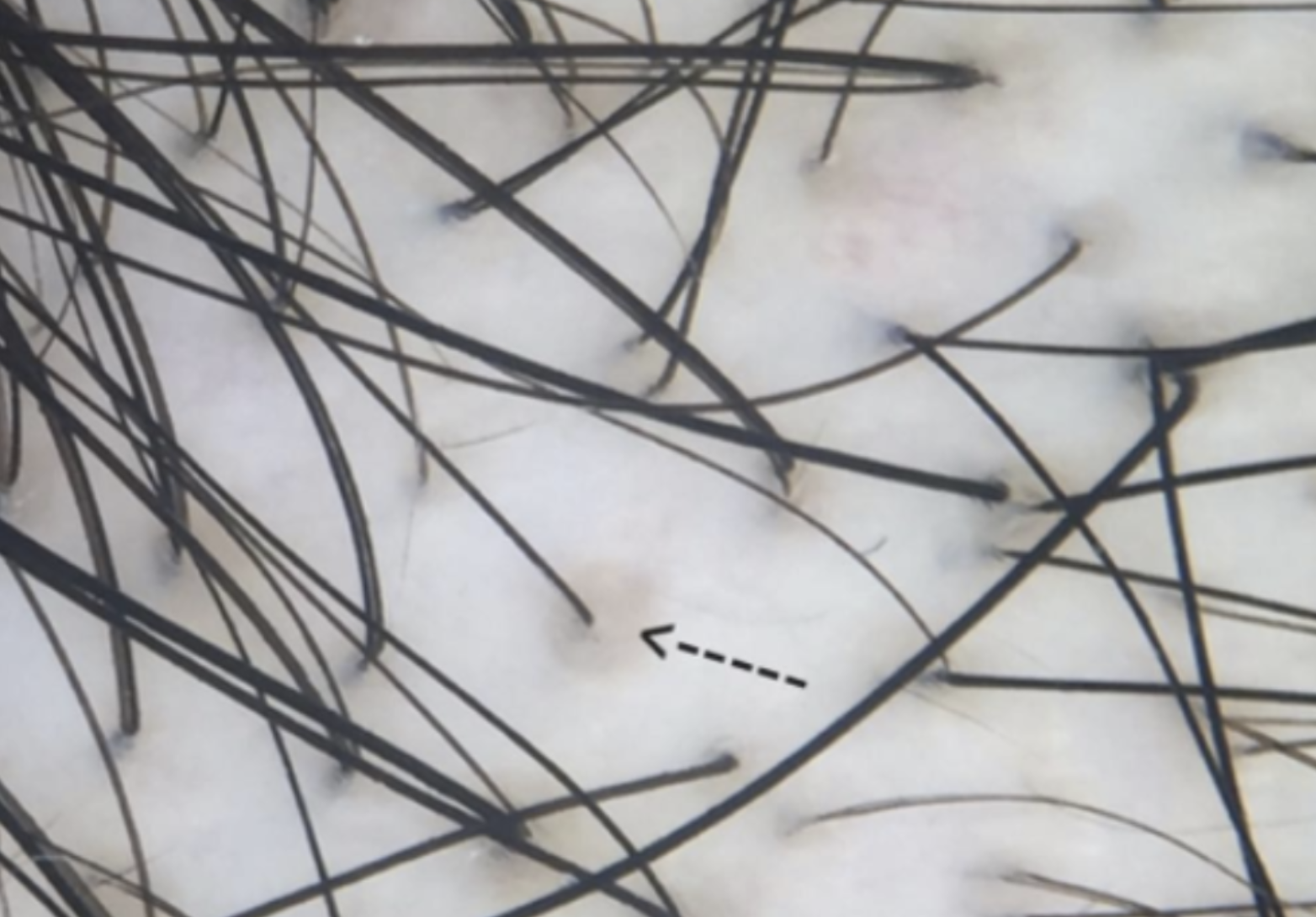Peripilar Sign in AGA: Is it possible we have it all wrong?
Introduction
It is increasingly clear that androgenetic alopecia (i.e. male and female genetic hair loss or “balding) is an inflammatory condition. Even though the scalp typically looks non-inflamed, scalp biopsies show that inflammation is present just a few millimetres beneath the scalp in an area known as the isthmus and infundibulum. Studies have shown that inflammation occurs relatively early in the course of androgenetic alopecia. This inflammation is believed to facilitate the progressive miniaturization of hair follicles.
Although the scalp usually looks fairly normal and non-inflammatory in patients with androgenetic alopecia, evaluation of the scalp via biopsy may also show features that suggest there is inflammation under the scalp.
The brown peripilar sign (BPPS) was proposed as a trichoscopic sign in patients with AGA. The PPS is defined as the presence of a brown halo, roughly 1 mm in diameter, at the follicular ostium. It is thought to represent the inflammation beneath the scalp in patients with AGA. Let’s look at one of the original 2004 studies that led to the current understanding of the BPPS and then at a new study that calls this all into question!
Brown peripilar sign (arrow) in a patient with androgenetic alopecia (AGA)
The 2004 Deloche Study
In 2004, Deloche and colleagues from France studied 40 patients with androgenetic alopecia. The researchers showed that the brown discolouration around hairs seen with dermoscopy correlated nicely with inflammation under the scalp when evaluated by biopsy. They called this the peripilar sign (PPS) and proposed that it was an early sign of AGA. They found it present in 90% of males and 86% of females with AGA.
“Peri” means around, and pilar means hair. The peripilar sign is also known by many other names, including the “brown peripilar sign (BPPS)” and “peripilar halo.”
Abdalla D et al. 2024
Authors from Egypt set out to study the significance of the peripilar sign (PPS) in a cohort of patients with AGA and to evaluate whether it is associated with perifollicular inflammation.
The authors recruited 100 patients with trichoscopically confirmed AGA. The study group included 87 (87%) females and 13 (13%) males. Patient ages ranged from 16 to 67, and the duration of hair loss ranged from 0.16 to 20 years.
Peripilar signs were present in 50% of the 100 cases studied. Scalp biopsies were performed on 22 patients with PPS and 23 patients without PPS.
Interestingly, perifollicular inflammation on biopsy was present in AGA patients with PPS as well as in those without PPS. PFI was present in 82.2% of all studied biopsies. Inflammation was rated as mild in most patients (89.2%). The inflammation surrounded the infundibulum in 100% of cases. No significant difference was identified between those with and without PPS regarding the amount of inflammation.
The peripilar sign was more often encountered in patients with skin type III (p=0.001). Patients without the PPS had fewer yellow dots. Histopathologically, biopsies from patients with the peripilar sign were significantly associated with absent melanophages (p=0.011).
Comment
This is an interesting study that questions the meaning of the peripilar sign. The authors propose that the peripilar sign in AGA is not linked to perifollicular inflammation. They feel it is a dark colour in those with lighter skin types.
Further studies are needed to verify and extend our understanding of the BPPS.
The authors wonder whether UV radiation is somehow affecting the melanocytes.
REFERENCES*
Abdalla D et al. Peripilar Sign in Androgenetic Alopecia: Does It Really Indicate Peripilar Infiltrate? Dermatol Pract Concept . 2024 Jan 1;14(1):e2024096. doi: 10.5826/dpc.1401a9
Deloche C et al. Histological features of peripilar signs associated with androgenetic alopecia. Arch Dermatol Res. 2004.
This article was written by Dr. Jeff Donovan, a Canadian and US board certified dermatologist specializing exclusively in hair loss.

